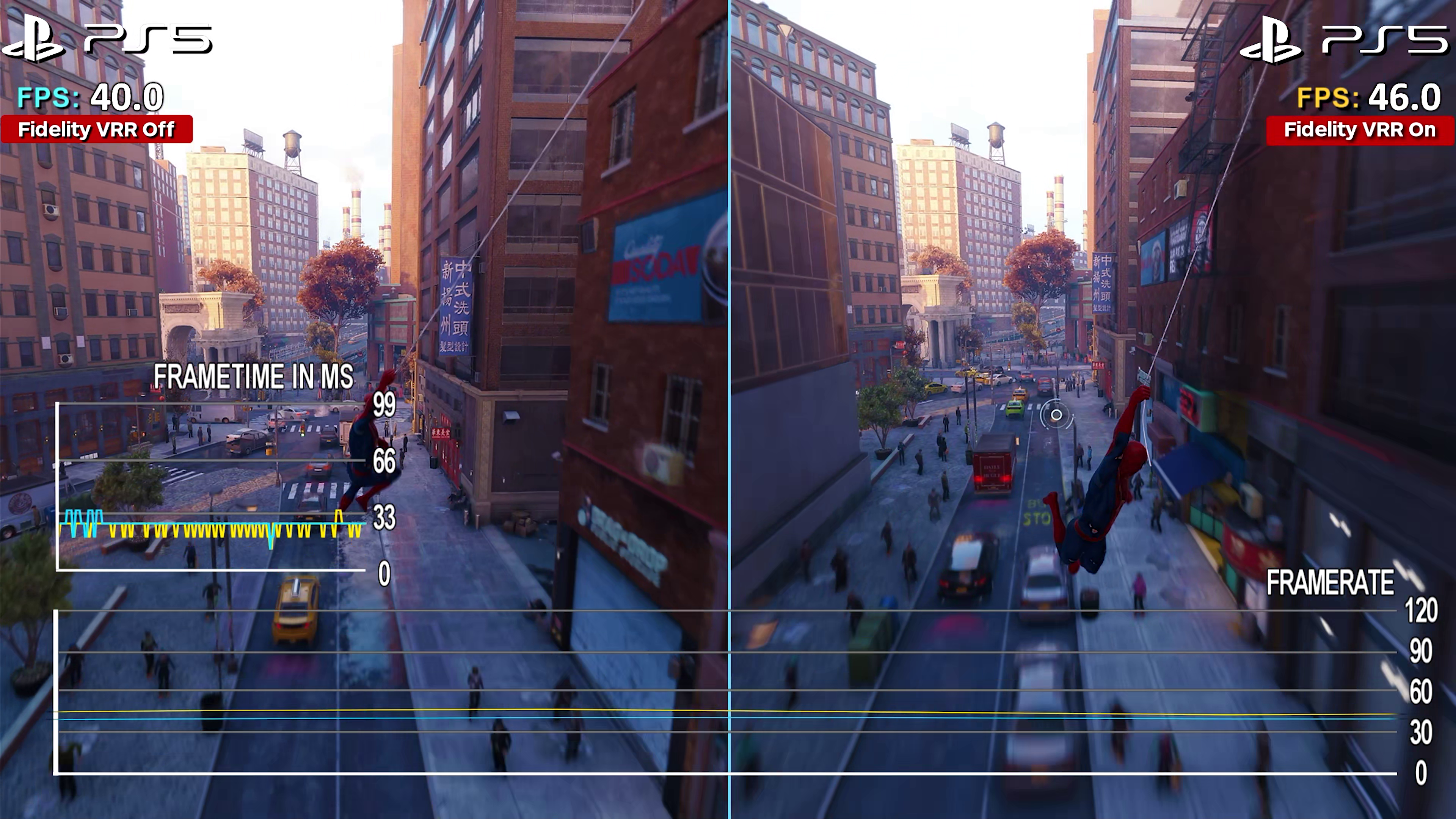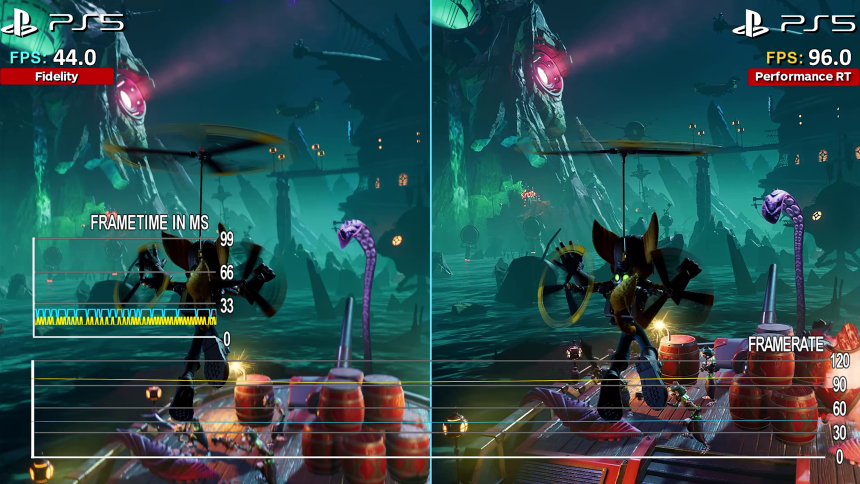This week’s DF Direct Weekly highlights the importance of VRR (variable refresh rate) for current-gen consoles, showing how it makes games run smoother and more consistently. VRR isn’t a quick fix for developers but greatly improves performance in some games, making it more relevant.
It works by matching the screen’s refresh rate to the game’s frame rate, reducing issues like screen tearing and judder. This results in smoother gameplay, especially on Xbox consoles, which support 120Hz VRR more widely than the PS5.
To understand VRR, it’s important to know that TVs generally operate at a fixed refresh rate, usually 60Hz. For a game to perform smoothly, it must run at 60fps, delivering a new frame for each refresh. If it can’t hit this target consistently, dropped frames result in judder or tearing.
VRR addresses this by synchronizing the screen refresh rate with the game’s frame rate. On PS5, VRR smooths frame rates between 48fps and 60fps on a 60Hz display, but optimal performance often requires bespoke 120Hz modes. On Xbox, the 120Hz VRR with low frame-rate compensation (LFC) works seamlessly, making VRR particularly effective.

Games like Elden Ring benefit greatly from VRR. Elden Ring, especially with its Shadow of the Erdtree DLC, operates with a fluctuating frame rate often hovering around 30fps. Although its frame-rate mode aims for 60fps, it seldom achieves this on current-gen consoles.
VRR helps smooth out these fluctuations, but the PS5’s 60Hz VRR range (48Hz to 60Hz) is too narrow to handle the game’s low frame rates effectively. In contrast, Xbox consoles’ broader 120Hz VRR support accommodates these lows, providing a smoother gameplay experience.
Similarly, Dragon’s Dogma 2, developed using Capcom’s RE Engine, runs with an unlocked frame rate that struggles to maintain a consistent 60fps due to varying CPU and GPU limitations. Despite improvements like resolution adjustments and disabling RT and motion blur, a consistent 60fps remains challenging.
Xbox’s 120Hz VRR mode helps smoothen the gameplay, and recent updates from Capcom added 120Hz VRR support for PS5, leading to a smoother experience on this console as well.
Bethesda’s Starfield also showcases the importance of VRR with its recent performance mode upgrade. This mode, designed with VRR in mind, offers various visual and performance toggles. While the game generally plays well across all displays, CPU-intensive areas like cities benefit from VRR. Setting consoles to 120Hz unlocks a broader VRR window, enhancing the overall gameplay experience.
The increasing importance of VRR is due to more games offering 60fps performance modes, often pushing console limits. Titles like Starfield, Dragon’s Dogma 2, and other high-demand games shipped or should have shipped at 30fps. However, with the growing trend towards higher frame rates, VRR has become a crucial tool.
While VRR shouldn’t replace solid performance optimization, it offers a significant performance boost. On PC, VRR is already an essential component, removing screen-tearing or v-sync judder, indicating its potential as a universal tool for enhancing gaming experiences.







